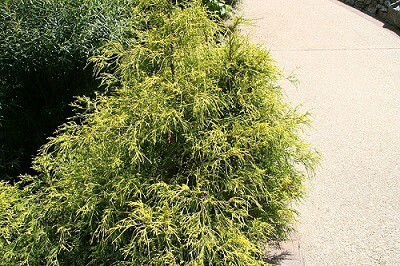If you are searching for False Cypress Care so before that let me tell you Do you want a dense hedge or low maintenance plant that grows without care then false cypress is the one you need. Mostly When We talk about this Tree or shrub , people have already seen these growing in many different landscapes or gardens or some are curious to know why it is referred to as mops in gold mops. There are many shrubs that are small to medium sized and the most popular one was Japanese false cypress. Here is the information all you need to know how to grow these beauties.
What is False Cypress?
False Cypress is born in Japan and is hardy to most USDA zones from 4-8. They are small to large shrubs and inside a forest it can reach to over a height of 70 feet tall (20-21 m) and about 20-30 spreads (8-9 m). Cultivators grow its Dwarf varieties that can be used in any landscapes and garden area.
Chamaecyparis pisifera or mop like cypress cultivators have these gold to yellow foliage shrub trees. Varieties like Dwarf mop cypress are 5 feet tall or below. Its growth rate is slower but it is worth the wait. Squarrosa varieties have larger growth and can grow up to 20 feet tall and it has some silver blue foliage that looks amazing.
Some of the benefits of this false cypress tree or shrub when growing in garden or landscapes are it gives bright color to the area having unique texture and evergreen hedges, borders and as you keep seeing this picture you may know they look like mop when its bushy foliage grows and it quite similar to mountain top filled with bright leaves.
Some are used as a bonsai for miniature or zen gardens or you may know it as a rock garden , it is made with limited sand and rocks and every plant has been pruned to give a beautiful shape. Pompom and topiary variety of cypress are used as specimen shrubs while Squarrosa varieties are used for privacy reasons to cover the area with shrubs. Only drawback is its slow growing but again golden mop is a perennial tree so it keeps on growing for years and with the minimal care it’s best to have one of those attractive shrubs.

Growing A False Cypress Tree
False cypress shrubs can tolerate partial shade but mostly they like full sun so if you have a garden with direct sun can be the best choice as sunlight helps the plant foliage colors to develop well.
In Winters They Have See a Problem called winter burn where plants release water when doing photosynthesis but that evaporates from needles and leaves this way again water was lost and can’t go down. The Base Is already frozen so this may increase water shortage results in plants might die but it has been seen that only some foliage is lost.
This damage can be solved using pruning in next spring. make sure every dead branch and leaves you cut down and false cypress need this every year to keep them healthy and growing.
Its maintenance is very less, and also very rare that it can be bothered by rabbits or deer. They can grow in many soils, mostly you may need to grow in ph 6.5-7 value. For roots to properly build you need to water them deeping so every root portion gets water. When the False cypress gets mature it can adjust to heat and drought situations. Fertilizer like slow release can be a good choice for them in the growing season.
Wrap Up
I Hope you get the solution by reading all the problems I provided on “False Cypress Care “, If you want to see other posts please check below.
Also Read :
Gold Mop Cypress – How to Propagate, Pruning, Care [Step By Step]
